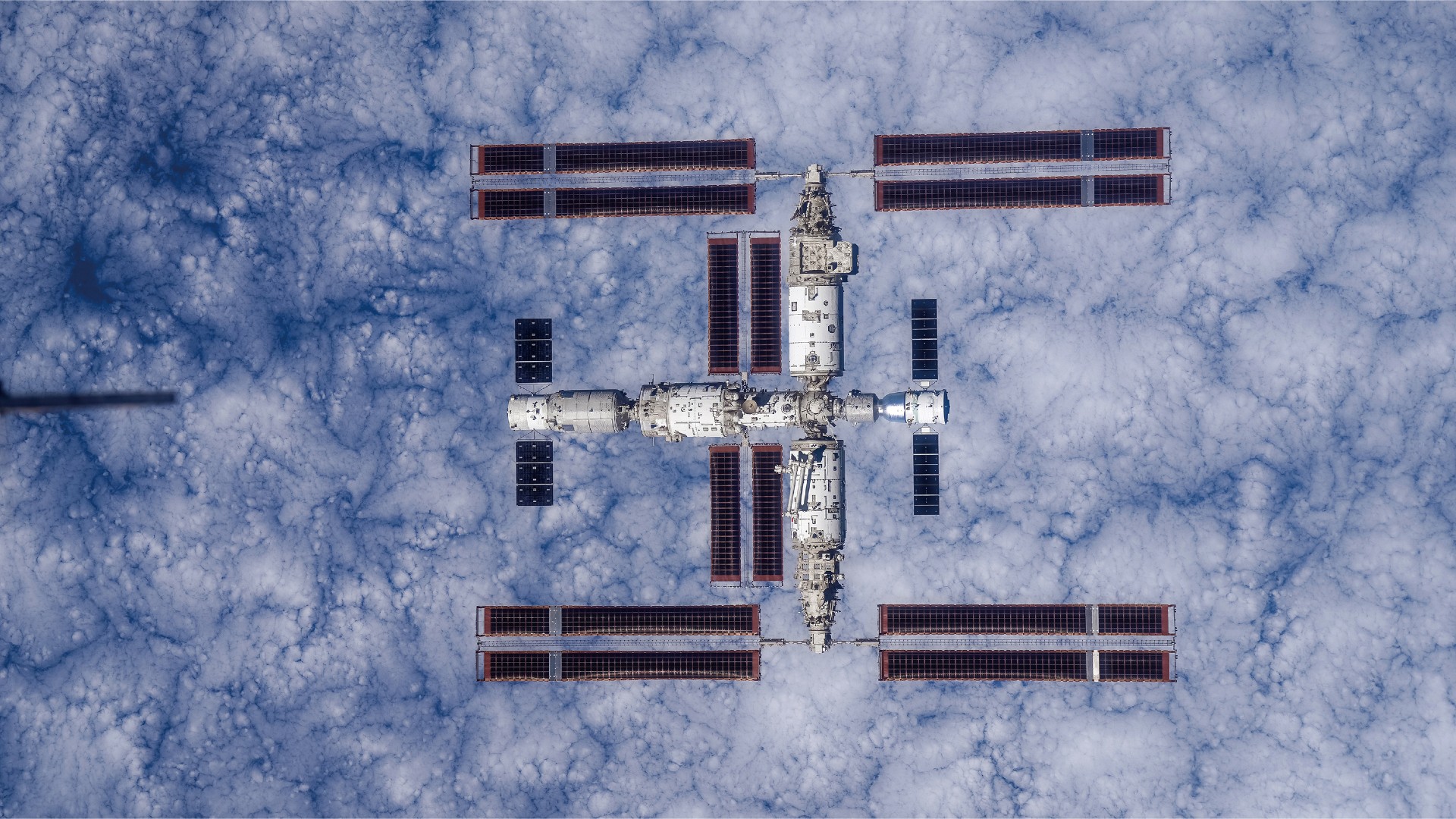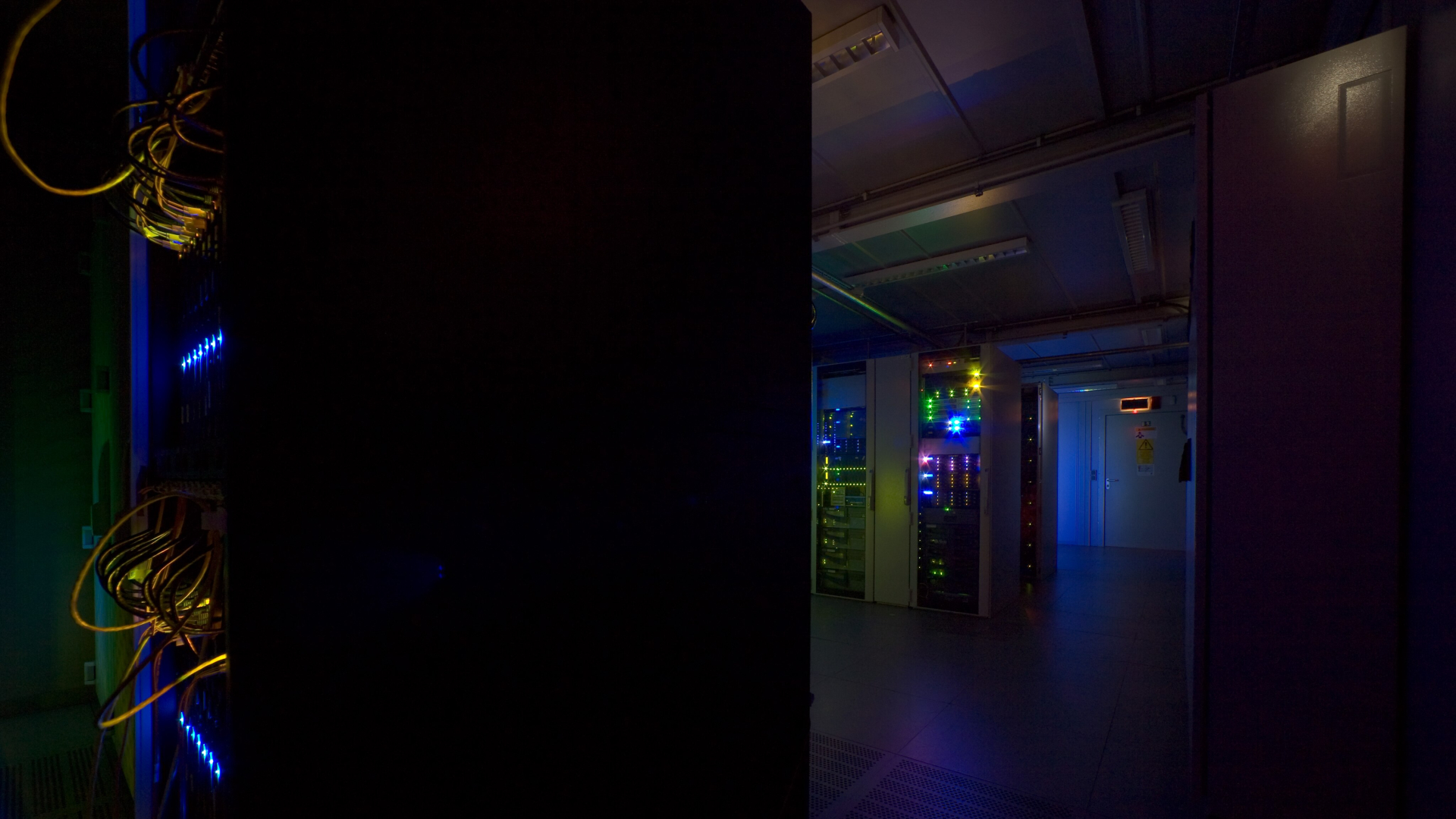US space science could fall behind China if private successors to ISS are delayed, Congress warns
Money and security are on the line, lawmakers heard during a Feb. 14 hearing.

NASA risks ceding ground to China in space research if there is no ready replacement for the International Space Station, lawmakers said in a hearing on Wednesday (Feb. 14).
China's burgeoning space program and its Tiangong space station were raised repeatedly in remarks during a livestreamed U.S. House subcommittee hearing considering the future of space research and the International Space Station (ISS), which is expected to be retired in 2030.
Multiple speakers at the subcommittee on space and aeronautics hearing discussed the "aging" ISS (parts of which first flew in 1998) and the "threat" of Chinese research eclipsing U.S. efforts in low Earth orbit.
NASA does have a transition plan, which relies on commercial space stations. But whether one or more of those outposts will be ready in time is an open question depending on factors such as funding, political priorities and technical progress. (NASA officials are considering extending ISS operations beyond 2030, too, depending on how things go.)
Related: The ISS just turned 25, and NASA is getting ready for the end (video)
Among the subcommittee's priorities is learning how NASA's activities in low Earth orbit "promote the national interest," along with "consequences of a gap" for science and international relations, according to chair Brian Babin (R-Texas). Babin represents the Houston district in which NASA's Johnson Space Center is located.
One of those consequences is money; companies are looking for stability as they plan their space projects. "Having an uncertain end date for the International Space Station ... creates a great deal of uncertainty with regard to investors," Mary Lynne Dittmar, chief government and external relations office for the Houston company Axiom Space, told the subcommittee during Wednesday's hearing. (Axiom has organized three private astronaut missions to the ISS with SpaceX and is one of the companies funded by NASA for new commercial complexes.)
Breaking space news, the latest updates on rocket launches, skywatching events and more!
Aside from the intrinsic value of applying space health research to isolated or senior populations, space patents represent a lucrative and commercially trackable revenue path to offset the large cost of launching things into space. But the U.S. is not the only player in the patent arena: China is attempting to grow its space research quickly, though Tiangong is smaller and less mature than the ISS.
The Chinese station includes "more than 20 mini-laboratories fitted with centrifuges, cold chambers reaching temperatures as low as -80 degrees Celsius [-112 degrees Fahrenheit], a high-temperature furnace, multiple lasers and an optical atomic clock," Nature reported in a 2022 news article. Rated to last until 2032 or so, Tiangong may end up hosting 1,000 experiments in its lifespan. By comparison, the ISS had housed roughly 3,000 investigations over 25 years as of September 2023, a Science news article states.
Related: A robot surgeon is headed to the ISS to dissect simulated astronaut tissue
Meanwhile, China's patents are dominating world research and growing quickly. The last decadal survey on space-based biological and physical research, released in 2023, says the U.S. share of international patents declined five percentage points to 10% between 2010 and 2020, while China's share tripled to 49% in the same period. (These figures are cited from Figure 25 in a 2023 report from the U.S. National Science Foundation, and do not take into account other impact factors, such as the quality of the research.)
As China rises, parts of U.S. research in space appear to be struggling. NASA's division of biological and physical sciences, which is responsible for many ISS experiments, is "severely underfunded relative to the scientific questions it is being asked to address, and has the least funding of all the divisions within NASA's Science Mission Directorate," a press release based on the 2023 decadal survey stated. "The lack of sufficient funding slows scientific progress when it should be speeding up to keep pace with the growth in space exploration and development."
Even if NASA were interested in using lab space on Tiangong, it likely could not do so; a 2011 directive known as the Wolf amendment prohibits bilateral agreements and coordination between NASA and Chinese government entities without express permission from Congress. Other countries in the ISS agreement, however, have a clearer path. Tiangong is the only other long-term orbiting platform available for space research unless commercial complexes can rocket to orbit before the ISS falls.
"If commercial platforms are not available ahead of decommissioning [ISS], our current partner nations will have no choice but to gravitate towards China," said subcommittee witness Dylan Taylor, CEO of Voyager Space, which is another company developing a private outpost with NASA support.
Other witnesses raised ethical or security concerns. For example, cybersecurity and missiles are among the space threats cited concerning China in a 2021 report from the U.S. Office of the Director of National Intelligence.
Aside from security concerns, there are also worries about the ISS' advanced age. The complex is healthy, and NASA continues to upgrade, swap out or repair vital components as needed. Astronauts spent years, for example, boosting power supplies during spacewalks by installing more powerful batteries and more efficient solar panels.
Yet at least one ISS module is showing strain from decades of orbital boosts and solar radiation. In January, for example, "multiple microscopic cracks" in an ISS module were noted in a report by NASA's Aerospace Safety Advisory Panel, or ASAP. (The agency previously disclosed in 2021 that the Russian-made Zarya module was exhibiting cracks, but ASAP's report did not identify the module by name.)
Assuming that the ISS isn't whacked by a piece of space debris that suddenly forces an evacuation — which is an exceedingly small but measurable and growing risk to stations like ISS or Tiangong — NASA is working as best as it can to bring the space station down safely in the Indian Ocean using a deorbiting vehicle. NASA closed a request for proposals for the space tug just this week, on Monday (Feb. 12).
"Basically, it'll go up there, and we'll wait six months or a year and then gradually the ISS will start to come down lower towards the Earth" as molecules of air drag on the complex, said Ken Bowersox, a former astronaut who is now associate administrator of NASA's Space Operations Mission Directorate.
"As it gets down to its final altitude," Bowersox continued, "we'll do an impulse from that deorbit vehicle, and that will cause the ISS to come [down] in a much smaller area of the Indian Ocean ... as far away from people as we can get."
NASA has a goal of posing less than a one-in-10,000 chance of a risk to populations on Earth's surface, he said. But that controlled reentry will happen only "if we are going to budget to pay for that over time," Bowersox emphasized. NASA's 2024 budget is still before Congress, and, until at least March 8, the agency is spending at 2023 levels under a continuing resolution.

Elizabeth Howell (she/her), Ph.D., was a staff writer in the spaceflight channel between 2022 and 2024 specializing in Canadian space news. She was contributing writer for Space.com for 10 years from 2012 to 2024. Elizabeth's reporting includes multiple exclusives with the White House, leading world coverage about a lost-and-found space tomato on the International Space Station, witnessing five human spaceflight launches on two continents, flying parabolic, working inside a spacesuit, and participating in a simulated Mars mission. Her latest book, "Why Am I Taller?" (ECW Press, 2022) is co-written with astronaut Dave Williams.


